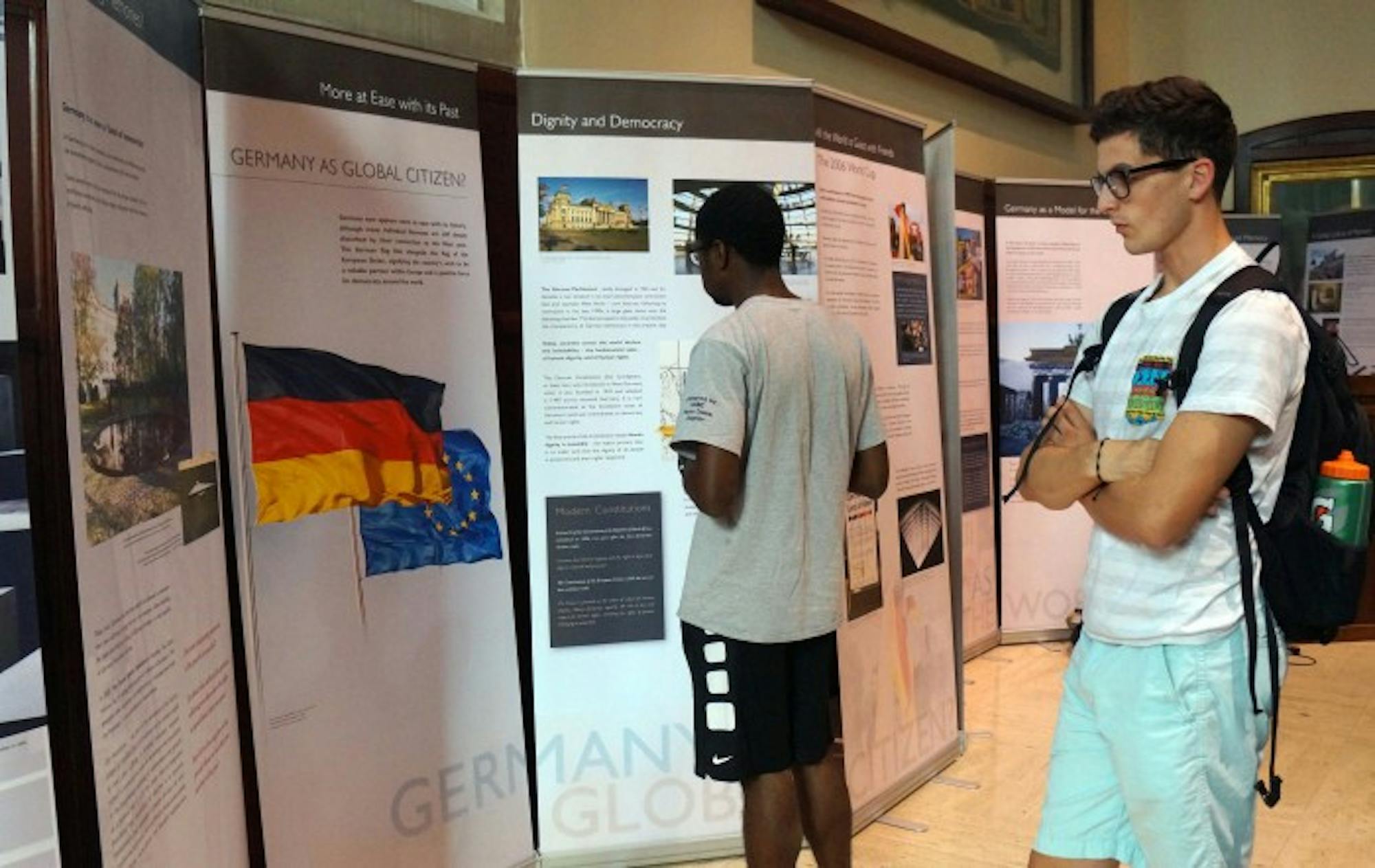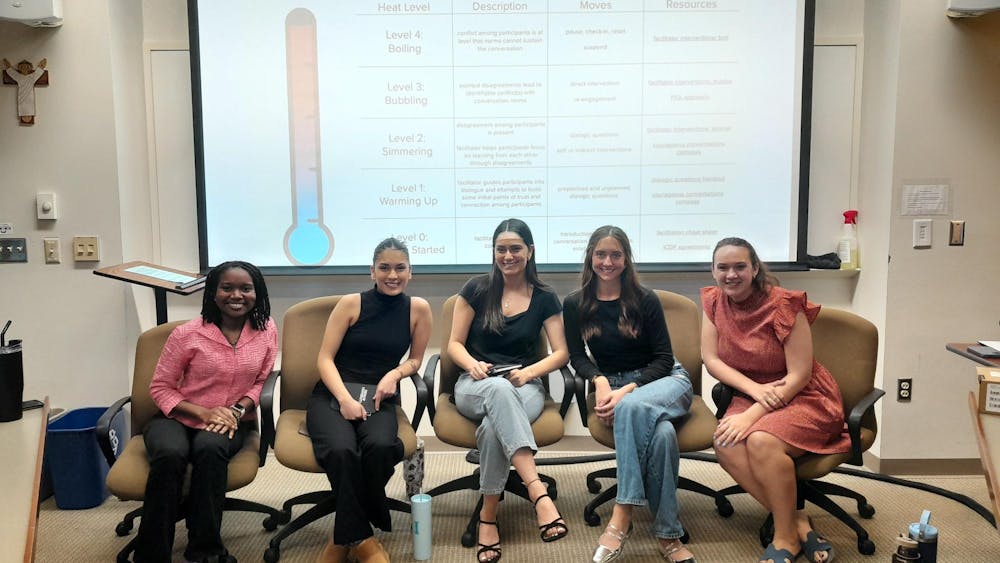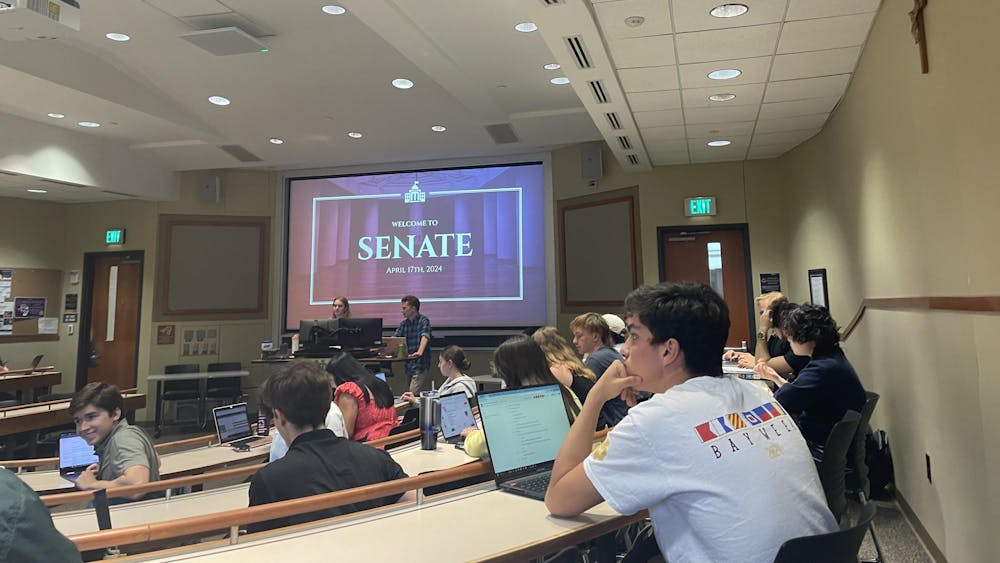
Monday afternoon, William Donahue, professor and chair of the department of German and Russian languages and literatures, presented the opening talk for the exhibition.
Donahue said Eric Santer, a Germanist at the University of Chicago introduced the term “post-Holocaust” into academic discourse in the 1990s.
“It is meant to displace and challenge the more commonplace moniker ‘postwar,’ by depriving us of one of the most oft-repeated excuses for the atrocities, especially as expressed by Germans unwilling to face up to the distinctive targeting and murder of a civilian and defenseless population,” he said. “The German phrase one reads in memoir after memoir, and hears again and again in documentaries is, ‘Es war ja Krieg’ — ‘It was, after all, war.’ This way of thinking invites us to dismiss the unprecedented organized mass murder as a casualty of war. War is terrible, and these things just happen.”
Donahue said he wants students to grasp the meaning of “post-Holocaust,” which he defined as “the understanding of the way our present world is a product of the Holocaust.”
“Yet, while understanding the Holocaust as prerequisite to grasping the modern world, it is also necessary to understand the way in which atrocity wants almost immediately to be ameliorated and softened in the hearts and minds of those charged with its very memory,” he said. “It is frequently just too much to bear. So even while we practice memory, we make serious concessions to ‘Holocaust exhaustion,’ sometimes even confusing the two.”
Rather than dismissing the reality of the Holocaust or falling victim to “Holocaust exhaustion,” Donahue said he urges students to fully realize the severe reality of the Holocaust.
“My wish for you as you look at this exhibit over the next several weeks is that you allow it to touch you and surprise you, even if much of it will strike you as familiar,” he said. “And please don’t try to take it in all at once. Do what Brecht said every smart reader should do when reading great literature: talk back to it, ask questions, make objections and, when appropriate, learn to say no. But learn also to ask yourselves why you are moved to respond in the manner you do. Notice what offends you, attend to what troubles and puzzles you.”
Donahue also said he was asked by the exhibition organizers to comment upon the large crucifix that hangs on the wall of the Great Hall. The comment was particularly relevant because of the outrage that was caused years ago when Polish nuns included a crucifix as part of a memorial near Auschwitz.
He said that if one views the cross as a depiction of “ethnic pride” or if one would plant a crucifix “in the way that some plant a flag,” then there is no place for such artifacts near a Holocaust exhibit.
However, Donahue said he interpreted the crucifix’s juxtaposition with the exhibition as a demonstration of solidarity in suffering.
“But if you see the Cross of Christ as a scandal, as a mystery of undeserved, and indeed shocking, suffering and perhaps also as an arrestingly honest depiction of the fragility of the entire human condition, then perhaps you will find it a useful way for framing this exhibit after all. My beloved undergraduate advisor wrote a little book that has left a lasting impression on me. It is called “Jesus, the Compassion of God.” And so this is how I view this crucifix: as a profound, and indeed divine, sign of solidarity in suffering,” he said. “Solidarity in suffering — what better way to frame an exhibit on the Holocaust?”
The Department of German and Russian Languages and Literature is sponsoring the exhibit in coordination with the Department of Theology, the Nanovic Institute for European Studies, the Center for Civil and Human Rights, the Kroc Institute for International Peace Studies, the program for philosophy, religion and literature and the Institute for Scholarship in the Liberal Arts.













